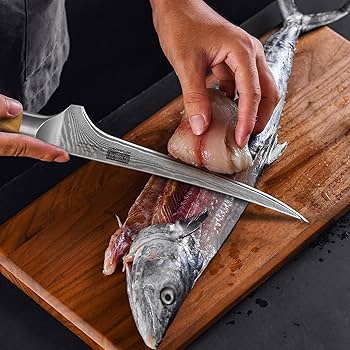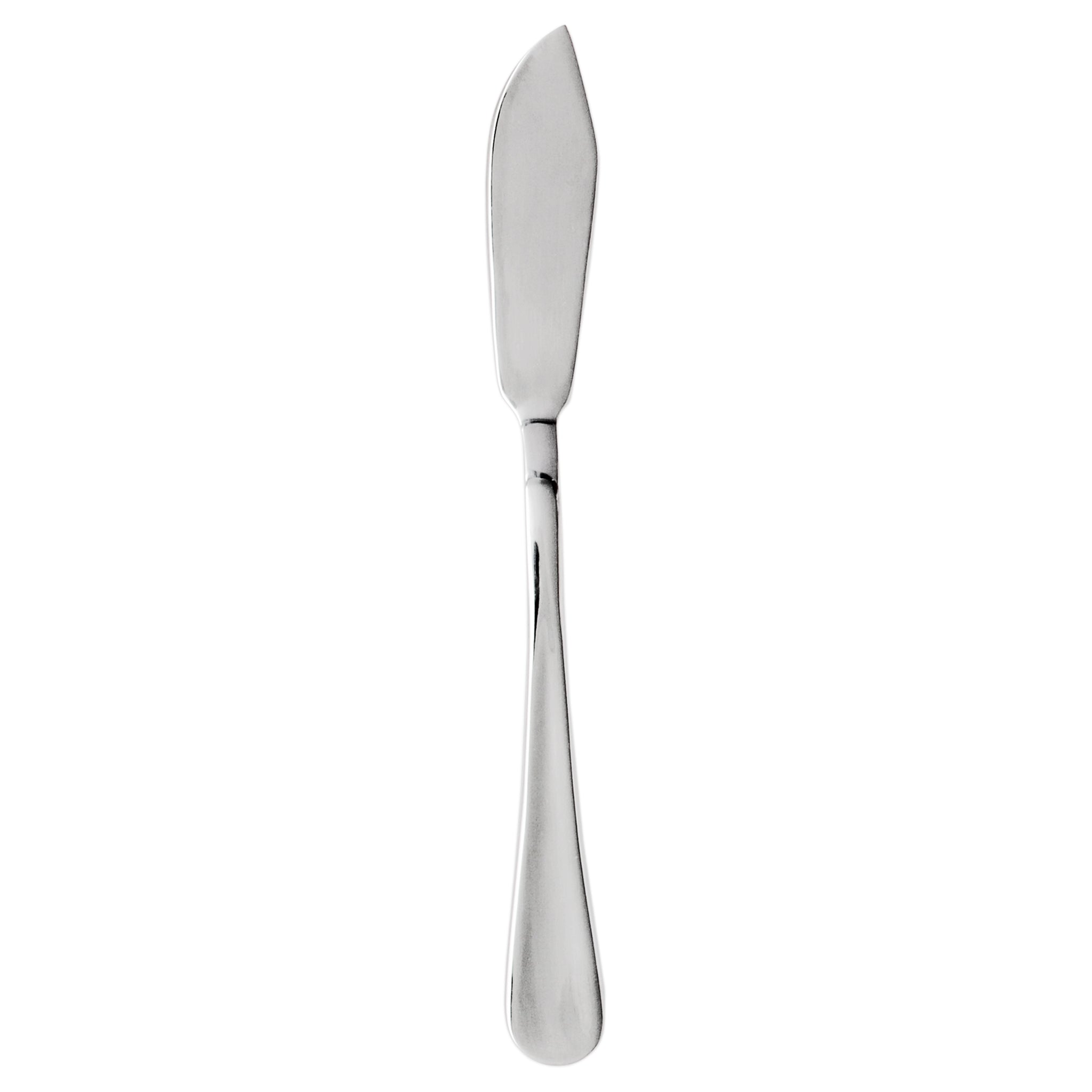Are there specialized fish knife options available?
Discover the Essential Attributes to Search For in a Top-Quality Fish Knife
When selecting a fish knife, several essential features demand attention. The blade material substantially influences toughness and sharpness, while adaptability plays a critical function in precision. In addition, the manage style affects convenience during extended usage. Edge retention and security features are additionally essential for practical usage. Understanding these elements will certainly assist customers towards making an educated option, yet the nuances of their significance may not be immediately clear.
Blade Material and Building
The performance of a fish knife mainly rests on its blade product and building and construction - fish knife. Top notch fish blades normally feature blades made from stainless-steel, high-carbon steel, or a combination of both. Stainless-steel is preferred for its rust resistance and low maintenance, making it ideal for freshwater and deep sea environments. High-carbon steel, while susceptible to rusting, uses superior sharpness and side retention, appealing to those who focus on cutting performance
The building of the blade likewise plays a critical duty in its effectiveness. Full-tang blades, which extend the entire length of the handle, offer improved strength and equilibrium. On the other hand, partial-tang blades may compromise sturdiness. In addition, the density of the blade should be thought about, as thinner blades allow for a lot more exact cuts, essential for delicate fish filleting. Ultimately, a well-constructed blade, using the ideal products, is basic for attaining the best results when preparing fish.
Blade Flexibility and Length
Blade versatility and size are crucial variables that considerably affect the efficiency of a fish knife. An adaptable blade enables accurate cuts and the ability to maneuver around bones and skin, making it important for filleting fish efficiently. The ideal amount of versatility can improve control, allowing the individual to accomplish clean, smooth cuts with very little effort.
In terms of length, fish blades generally range from 6 to 9 inches. A longer blade is beneficial for larger fish, supplying the reach required for reliable filleting. On the other hand, a much shorter blade provides maneuverability, making it suitable for smaller fish or intricate jobs.
Eventually, the choice of adaptability and size ought to align with the particular fishing demands and choices of the individual. A healthy combination of these attributes guarantees optimum efficiency, improving the total fish preparation experience.
Take Care Of Design and Comfort
When using a fish knife, a properly designed manage is essential for guaranteeing convenience and control. The take care of ought to fit firmly in the hand, permitting a company hold throughout intricate tasks such as filleting or skinning fish. Materials like rubber, timber, or composite give various degrees of convenience and grip, influencing the individual's experience.
Ergonomic attributes are also critical; contours that comply with the all-natural form of the hand can reduce fatigue throughout long term use. Additionally, the take care of's texture plays a considerable duty in protecting against slippage, particularly when collaborating with damp hands.
Weight circulation is an additional element that adds to the overall balance of the knife, improving ability to move. A comfortable manage layout not only boosts efficiency but additionally promotes security, as a secure hold decreases the risk of accidents (fish knife). Inevitably, a thoughtful deal with layout can considerably raise the efficiency of a fish knife in cooking applications
Side Retention and Sharpening
While making use of a fish knife, keeping a sharp side is essential for accomplishing clean cuts and specific filleting. A quality fish knife must show excellent edge retention, enabling it to remain sharp through multiple uses. This particular is usually identified by the sort of steel made use of in the blade; high-carbon stainless-steel is regularly chosen as a result of its balance of solidity and corrosion resistance.

Safety Features and Sheath Options
When picking a fish knife, countless safety features and sheath alternatives are essential considerations. An ergonomic and safe manage lowers the threat of slips throughout usage, improving individual safety. Distinctive holds and finger guards even more avoid accidents, enabling much better control while filleting fish.
Furthermore, a blunt tip can decrease the danger of leak injuries, making it a much safer option for beginner users.
Sheath options also play a vital duty in safety and security. A properly designed sheath shields the blade, preventing accidental cuts when the knife is saved or delivered. Sheaths made from sturdy materials, such as nylon or hard plastic, deal added protection versus environmental components.
Some sheaths come with belt clips or loopholes, making sure the knife is quickly accessible while continuing to be safe. Ultimately, prioritizing safety attributes and sheath alternatives contributes substantially to the total performance and customer experience of a fish knife.
Often Asked Inquiries
What Is the very best Brand for Fish Knives?
The finest brand for fish knives frequently varies by choice, yet prominent names like Wüsthof, Victorinox, and Reject are regularly suggested for their intensity, resilience, and craftsmanship, making them leading choices among culinary lovers and specialists alike.
Can Fish Blades Be Utilized for Other Sorts Of Fish?
Fish blades can without a doubt be utilized for other kinds of fish. Their layout and intensity make them flexible enough for various fish species, boosting the general experience of filleting and get more info preparing different sorts of fish and shellfish.

How Do I Tidy and Maintain My Fish Knife?
To clean up and preserve a fish knife, rinse it with cozy water after usage, gently scrub with moderate soap, completely dry completely, and shop in a protective sheath to stop damages and rust. Regular honing is necessary.
Are There Fish Knives Particularly for Left-Handed Users?
Yes, there are fish knives designed specifically for left-handed users. These knives feature reversed blade angles and ergonomic deals with, ensuring comfort and performance for left-handed individuals while filleting and preparing fish. Quality options are available from different producers.
What Is the Price Variety for High Quality Fish Knives?
Quality fish knives usually range from $20 to $150, depending on materials, brand name track record, and craftsmanship. Higher-end options might include premium functional designs and customized layouts, while affordable options still offer acceptable performance for informal customers.
The performance of a fish knife greatly hinges on its blade product and building and construction. Top quality fish knives normally feature blades made from stainless steel, high-carbon steel, or a mix of both. Blade versatility and size are vital elements that substantially affect the efficiency of a fish knife. Fish knives can undoubtedly be utilized for various other kinds of fish. These blades include reversed blade angles and ergonomic manages, making certain convenience and performance for left-handed individuals while filleting and preparing fish.